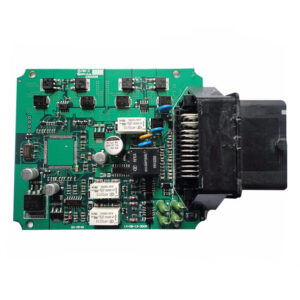Vehicle Electronic PCB Board development have changed and will continue to change dramatically. Vehicle Electronic PCB Board used to be very basic, but also very reliable, mainly used in the engine control unit (ECU) / powertrain, automatic braking system (ABS) and body control module (BCM).
Now we see a lot of new and developing Vehicle Electronic PCB Board categories. Typically, these Vehicle Electronic PCB Boards are grouped by function into Advanced Driver Assistance Systems (ADAS), including autonomous driving components and sensors, powertrain and advanced drivers, and infotainment/communication technology.
Another way to categorize Vehicle Electronic PCB Board development is by functional benefit, namely connectivity, safety and ability to reduce carbon emissions.

Vehicle Electronic PCB Board Development
No category is seen taking the lead. Functionality is already integrated into the car or vehicle, and often requires more than a category. For automobile electronic circuit board categories, the driving force for demanding electronic systems and PCBs is very strong. For example, it makes no sense to install a (semi) autonomous driving function as a standalone system.
Other functions need to be connected to locate the vehicle and ultimately communicate with the “X”, which can refer to other cars, traffic lights or control points. Does it need to be connected to the car’s drivetrain to direct the engine or steering wheel?
Of course there is one product category that needs to be addressed with the highest priority and is currently in development – prototype car PCB board designs and growing demand. We are seeing a significant increase in the global demand for electric vehicles circuit board development of all electric drivetrain projects at an ever-increasing pace.
A large number of RFQ and development projects have entered the PCB supplier stage, and these emerging product categories determine the Vehicle Electronic PCB Board Development.






